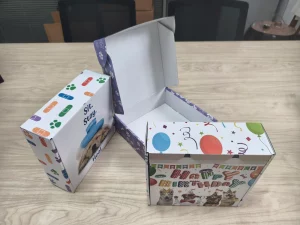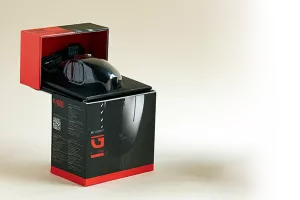Ensuring Packaging Quality Control: The Ultimate Checklist for Inspection and Quality Assurance
In the fast-paced world of manufacturing, packaging quality control is paramount. Ensuring that your products reach customers in perfect condition not only boosts your brand’s reputation but also guarantees رضا العملاء. This comprehensive guide dives deep into the importance of quality control in packaging, offering insights, tips, and a detailed packaging quality control checklist to help you maintain the highest standards.
جدول المحتويات
Why Is Quality Control in Packaging Important?
Quality control in packaging plays a crucial role in maintaining product integrity and ensuring رضا العملاء. Proper التعبئة والتغليف not only protects the product but also reflects the brand’s commitment to عالية الجودة standards.
- Product Safety: Effective التعبئة والتغليف safeguards against product damage during transit.
- Brand Reputation: Consistent high-quality packaging enhances brand image and customer trust.
- الامتثال التنظيمي: Adherence to regulatory standards is essential to meet legal requirements.
- Customer Expectations: Meeting and exceeding expectations reduces customer complaints and returns.
Without stringent quality control, products may not meet the necessary quality standards, leading to customer dissatisfaction and potential losses.
Understanding Packaging Materials and Quality Standards
اختيار المناسب مواد التعبئة والتغليف is vital for ensuring جودة المنتج and adhering to quality standards.
- Materials Used: Options include cardboard, corrugated paperو عبوات صديقة للبيئة solutions.
- Quality Standards: Materials must meet specific criteria for durability, strength, and safety.
- Consistency: Uniformity in materials ensures that every product receives the same level of protection.
لدينا صناديق قلابة علوية مخصصة مع إغلاق مغناطيسي exemplify the use of premium materials for high-quality packaging.

What Is a Packaging Quality Control Checklist?
A packaging quality control checklist is a comprehensive tool used to ensure that the packaging meets all established quality requirements.
Key Elements of the Checklist:
- Material Inspection: Verify the quality of مواد التعبئة والتغليف before use.
- Design Accuracy: Ensure that dimensions and artwork match specifications.
- Structural Integrity: Check the التعبئة والتغليف for strength and durability.
- Printing Quality: Inspect for clarity, color accuracy, and defects.
- Assembly Verification: Confirm that all components fit together correctly.
- Final Inspection: Perform a thorough review of the finished product.
Using a qc checklist helps maintain consistent quality and prevents errors in the packaging process.
Key Components of Quality Control Checks
Implementing effective quality control checks involves several critical steps:
- Raw Material Inspection: Examine materials upon arrival for any defects or inconsistencies.
- In-Process Monitoring: عادي inspection during the production process to catch issues early.
- Post-Production Evaluation: Assess the finished product for adherence to quality standards.
- Documentation and Traceability: Keep detailed records to track issues back to their source.
These steps ensure that the التعبئة والتغليف not only looks good but also meets all necessary quality control criteria.
How to Conduct Effective Packaging Inspections
Conducting thorough packaging inspections is essential for maintaining عالية الجودة المنتجات.
- Establish Clear Criteria: Define what constitutes acceptable quality for your التعبئة والتغليف.
- Train Inspectors: Equip your team with the skills to identify and address potential issues.
- Use the Checklist: Rely on the packaging quality control checklist to cover all aspects.
- Regular Audits: Schedule periodic reviews to ensure ongoing compliance.
By following these steps, you can ensure product integrity and enhance your brand’s reputation.

The Role of Quality Assurance in Packaging
While quality control focuses on identifying defects after they occur, quality assurance aims to prevent issues by improving the packaging process.
- Process Improvement: Analyze and optimize production methods.
- إدارة المخاطر: Identify potential problems before they arise.
- Compliance Monitoring: Ensure all operations meet regulatory compliance و industry standards.
- آراء العملاء: Use input to refine processes and exceed customer expectations.
Investing in quality assurance leads to more efficient operations and higher-quality packaged products.
Common Defects in Packaging and How to Avoid Them
Understanding common defects helps in implementing corrective actions swiftly.
Typical Defects:
- Printing Errors: Misaligned or smudged logos and text.
- Structural Weaknesses: Flimsy materials leading to product damage.
- Contamination: Foreign substances compromising product safety.
- Incorrect Dimensions: Packaging that doesn’t fit the product properly.
Prevention Strategies:
- Regular Inspections: Frequent checks during production.
- Quality Materials: Use only vetted مواد التعبئة والتغليف.
- Supplier Management: Work with reliable partners to ensure material quality.
لدينا الصناديق المموجة are designed to avoid such defects, providing robust protection for your goods.
Implementing Quality Management Systems
A solid نظام إدارة الجودة (QMS) is foundational for consistent quality control.
- Standard Operating Procedures (SOPs): Clearly documented processes.
- Training Programs: Ongoing education for staff on best practices.
- Performance Metrics: Track key indicators to measure success.
- التحسين المستمر: Regularly update the QMS based on findings.
A QMS enhances efficiency and ensures that all products meet the highest quality standards.

Improving Quality Through Continuous Inspection
Continuous inspection is essential for improving quality over time.
- Real-Time Monitoring: Use technology to track production in real-time.
- Feedback Loops: Implement systems where employees can report issues easily.
- Data Analysis: Utilize collected data to identify trends and areas for improvement.
- Stakeholder Engagement: Involve all levels of the organization in quality control efforts.
By embracing continuous quality control in packaging, companies can stay ahead of potential problems and keep customers satisfied.
FAQs About Packaging Quality Control
Why Is Quality Control Important in Packaging?
Quality control ensures that the التعبئة والتغليف protects the product, meets legal requirements, and satisfies customers. It plays a crucial role in maintaining brand reputation و product safety.
What Is Included in a Packaging Quality Control Checklist?
A qc checklist covers material quality, design specifications, structural integrity, printing quality, assembly, and final inspection to ensure all aspects meet the required quality standards.
How Does Quality Control Differ from Quality Assurance?
While quality control focuses on identifying and correcting defects in finished products, quality assurance is about improving the packaging process to prevent defects from occurring in the first place.
What Are Common Defects in Packaging?
Common defects include printing errors, structural weaknesses, contamination, and incorrect dimensions. Regular inspections and using high-quality materials can prevent these issues.
How Can I Ensure High-Quality Packaging for My Products?
Implement a comprehensive نظام إدارة الجودة, use a detailed packaging quality control checklist, train your staff, and partner with reputable suppliers to ensure high-quality packaging.
Conclusion: Upholding the Highest Standards
Maintaining stringent packaging quality control is non-negotiable for businesses aiming for excellence. By investing in robust quality control و quality assurance processes, you not only protect your products but also build trust with your customers. Remember, high-quality packaging is a reflection of the care and professionalism of your brand.
كشركة رائدة مصنع تصنيع التغليف والتعبئة والتغليف, we are committed to delivering high-quality products that meet and exceed your expectations. اتصل بنا today to learn how we can support your التعبئة والتغليف needs with our expertise and dedication to quality.
Summary of Key Points
- Packaging quality control is essential for product safety and customer satisfaction.
- Use a comprehensive quality control checklist to cover all aspects of التعبئة والتغليف.
- Quality assurance focuses on improving processes to prevent defects.
- Common defects can be avoided with regular inspections and high-quality materials.
- Implementing a solid نظام إدارة الجودة ensures consistent standards.
Explore Our Premium Packaging Solutions
- صناديق تغليف الأكمام – Elegant and functional designs for your products.
- صناديق تغليف مستحضرات التجميل – Showcase beauty products with style and safety.
- تغليف الالكترونيات – Protect delicate devices with our specialized boxes.
- صناديق تغليف العناية بالبشرة المخصصة – Preserve the integrity of skincare items.
- Printed Die Cut Window Display Boxes – Enhance product visibility and appeal.








